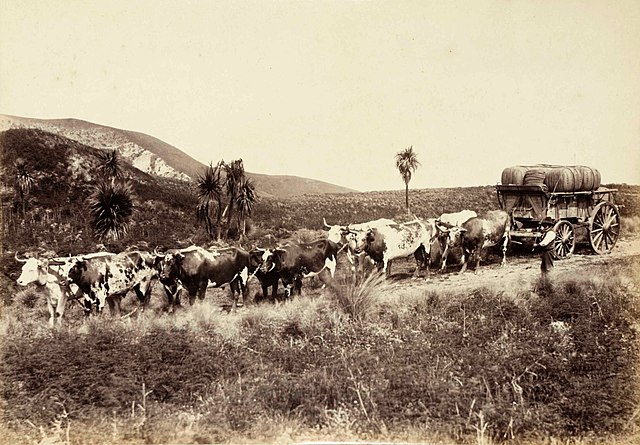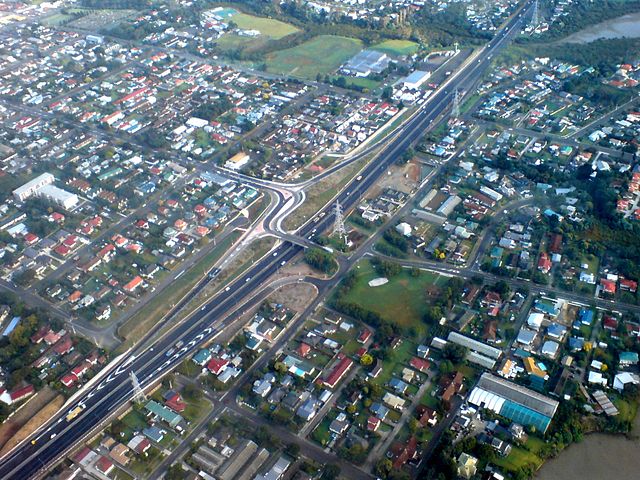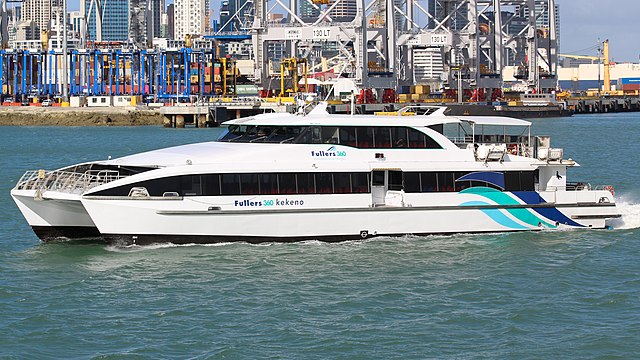Transport in New Zealand, with its mountainous topography and a relatively small population mostly located near its long coastline, has always faced many challenges. Before Europeans arrived, Māori either walked or used watercraft on rivers or along the coasts. Later on, European shipping and railways revolutionised the way of transporting goods and people, before being themselves overtaken by road and air, which are nowadays the dominant forms of transport. However, bulk freight still continues to be transported by coastal shipping and by rail transport, and there are attempts to (re)introduce public transport as a major transport mode in the larger population centres.
Highways, rail lines and an inter-island ferry in central Wellington
A bullock wagon in the Canterbury Region in the 1880s. Their tracks later often formed the first roads.
State Highway 1 in South Auckland.
Imported cars on Auckland wharf
Public transport in New Zealand
Urban bus transport is the main form of public transport in New Zealand. Two of the country's largest cities, Auckland and Wellington, also have suburban rail systems, while some cities also operate local ferry services. There are no rapid transit metros and no remaining tram systems active anywhere in New Zealand, though trams once had a major role in New Zealand's public transport.
Bus in Wellington, the region in New Zealand with the greatest public transport use.
Kekeno, a vessel belonging to Fullers360 Group
An example bus from Auckland, NZ Bus 2114
A typical bus in Dunedin.








